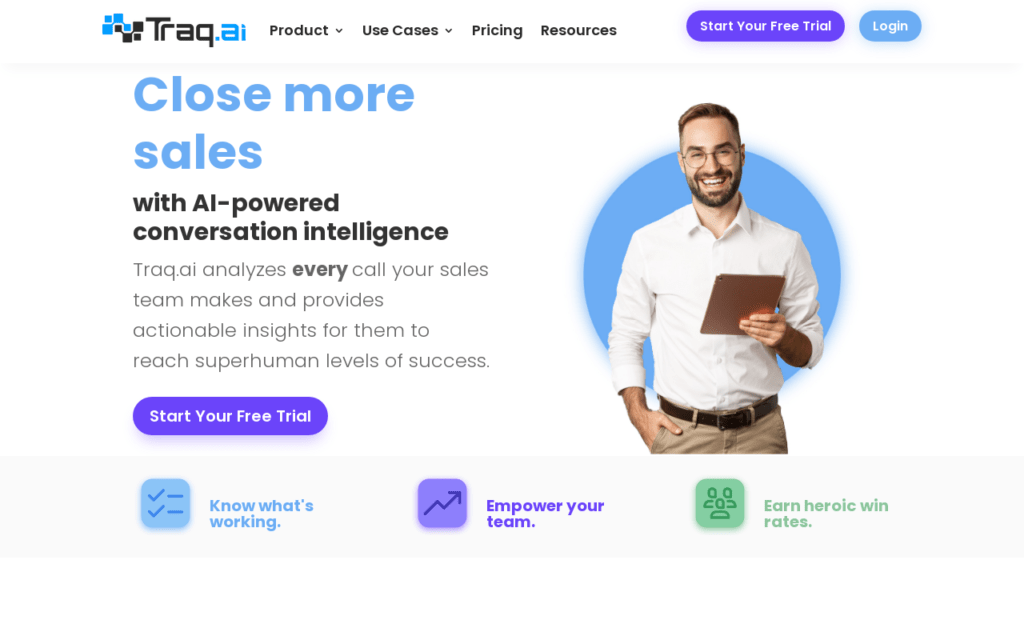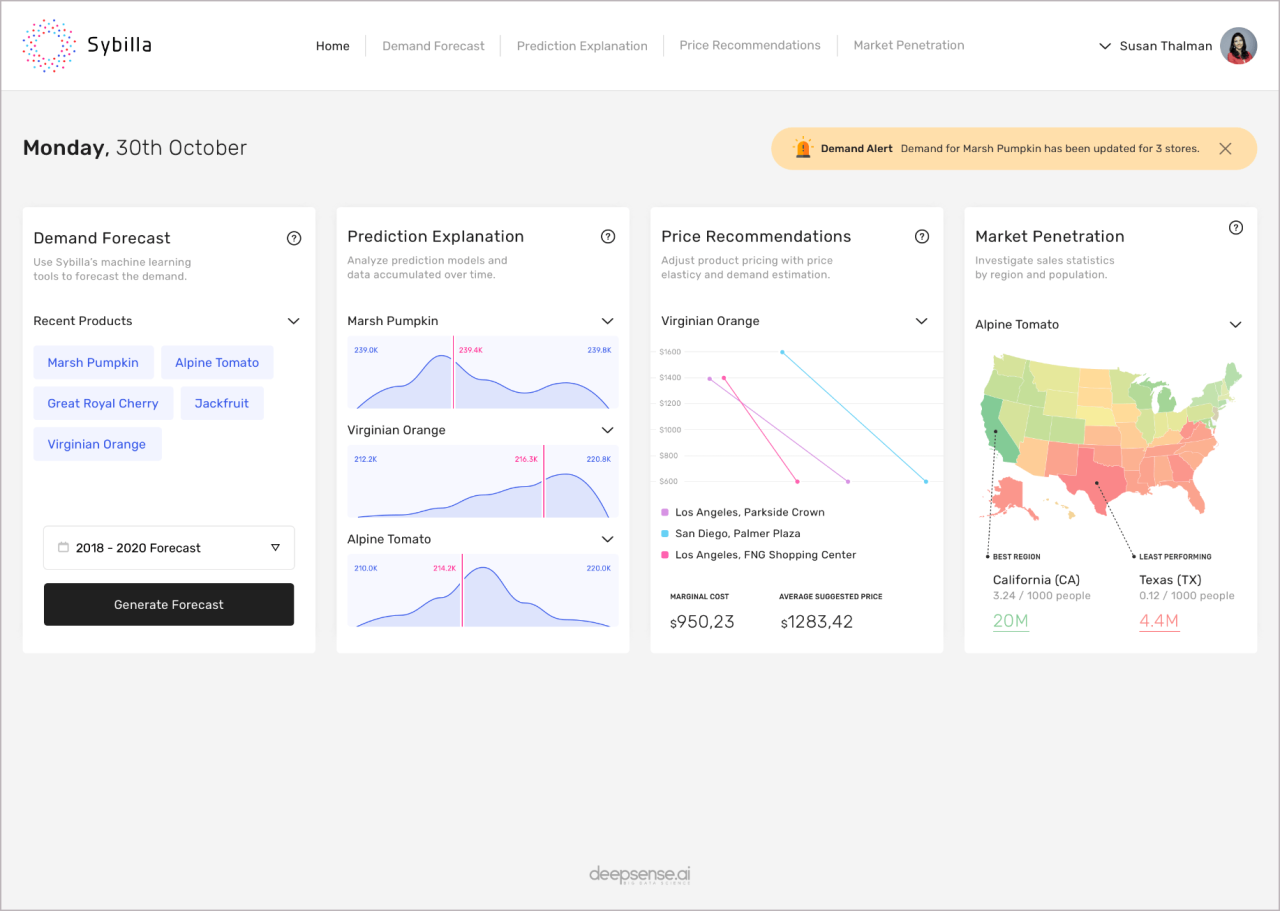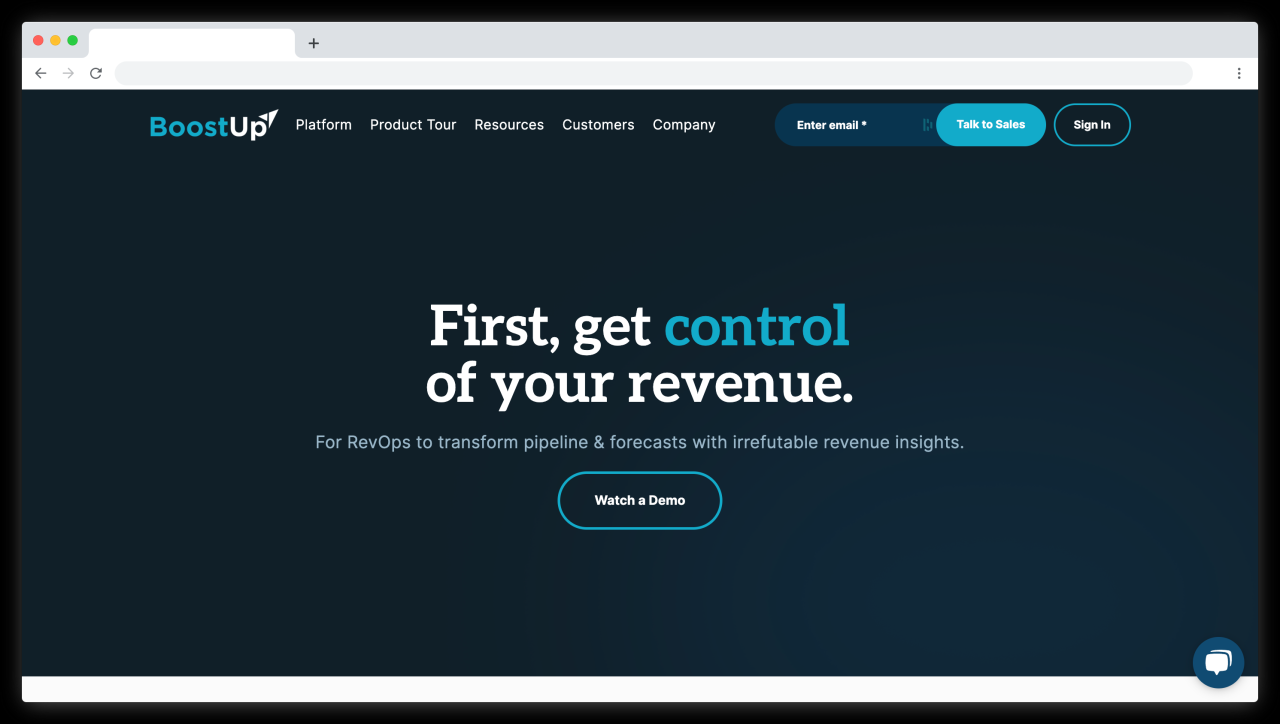AI tools for sales forecasting are revolutionizing how businesses predict future sales. No longer reliant solely on intuition and historical data, companies are leveraging the power of artificial intelligence to generate more accurate, data-driven forecasts. This allows for proactive adjustments to sales strategies, optimized resource allocation, and ultimately, improved revenue generation. This exploration delves into the methodologies, tools, and implications of this transformative technology.
We’ll examine various AI models, including time series analysis and machine learning algorithms, demonstrating their practical application in real-world scenarios. The discussion will also cover crucial aspects like data sourcing, model building and training, interpretation of results, and ethical considerations inherent in utilizing AI for sales forecasting. We’ll address potential challenges and explore strategies for mitigating risks, ultimately providing a comprehensive understanding of this rapidly evolving field.
Data Sources for AI-Driven Sales Forecasting

Accurate sales forecasting is the cornerstone of effective business planning. AI significantly enhances this process, but its power is directly tied to the quality and comprehensiveness of the data it receives. Leveraging diverse data sources, coupled with robust preprocessing techniques, is crucial for building reliable and insightful AI sales forecasting models.
AI-driven sales forecasting models require a variety of data sources to accurately predict future sales. The selection and integration of these sources significantly impact the model’s accuracy and reliability. Understanding the characteristics of each source is paramount for successful implementation.
Key Data Sources for AI Sales Forecasting
Several key data sources contribute to accurate AI-driven sales forecasting. These sources can be broadly categorized into internal and external data. Internal data sources originate within the company, offering a detailed view of sales operations, while external sources provide broader market context and trends.
AI tools are revolutionizing sales forecasting by analyzing vast datasets to predict future sales trends. However, the accuracy of these predictions heavily relies on the performance of the underlying infrastructure, which is why robust Cloud performance monitoring is crucial. Without efficient cloud infrastructure, even the most sophisticated AI sales forecasting tools can yield inaccurate results, ultimately impacting business decisions.
| Data Source | Reliability | Accessibility | Cost |
|---|---|---|---|
| Internal Sales Data (CRM, POS systems) | High (if well-maintained) | High | Low (already collected) |
| Marketing Data (Campaign performance, website analytics) | Medium (depends on data quality) | High | Low to Medium (depending on tools used) |
| Economic Indicators (GDP growth, inflation rates) | High (from reputable sources) | Medium (requires subscription to data providers) | Medium to High (depending on data provider and scope) |
| Competitor Data (Market share, pricing strategies) | Medium (can be difficult to obtain accurately) | Low (often requires market research) | High (market research can be expensive) |
Data Quality and Preprocessing
The accuracy of AI sales forecasting models is heavily reliant on the quality of the input data. Data quality encompasses completeness, accuracy, consistency, and timeliness. Missing values, outliers, and inconsistencies can significantly bias model predictions. Preprocessing techniques are essential to address these issues.
AI tools are revolutionizing sales forecasting, offering businesses powerful predictive capabilities. For robust cloud infrastructure to support these complex AI models, consider the capabilities of a platform like Google Cloud Platform (GCP); a comprehensive review can be found here: Google Cloud Platform (GCP) review. Ultimately, the choice of cloud provider significantly impacts the efficiency and accuracy of your AI-driven sales forecasts.
Common preprocessing steps include handling missing values (imputation or removal), outlier detection and treatment (capping, winsorizing, or removal), data transformation (scaling, normalization), and feature engineering (creating new variables from existing ones). For example, imputing missing values in sales data might involve using the average sales of similar products or time periods. Outlier treatment might involve identifying unusually high or low sales figures that could be due to errors or unique events and adjusting them accordingly.
Interpreting and Utilizing Forecasts

AI-driven sales forecasting models provide valuable numerical predictions, but their true power lies in understanding and applying these predictions effectively. Successfully integrating AI forecasts into your sales strategy requires a nuanced understanding of the output and a clear plan for translating those numbers into actionable steps. This involves not just interpreting the forecast itself, but also understanding its limitations and context.
Interpreting the output of an AI sales forecasting model involves more than just looking at the predicted sales figures. It requires a critical evaluation of the model’s confidence intervals, identifying potential outliers or anomalies, and considering the underlying assumptions and data used in the model’s training. For example, a forecast predicting a 15% increase in sales for Q4, with a 95% confidence interval of 10% to 20%, offers a much clearer picture than a simple 15% prediction. Understanding the range of possible outcomes allows for more robust planning and risk mitigation. Furthermore, investigating any significant deviations from historical trends or seasonality patterns can reveal valuable insights and potential opportunities or threats.
Understanding Confidence Intervals and Error Margins
AI models don’t provide perfectly precise predictions. Instead, they offer forecasts alongside confidence intervals, representing the range within which the actual sales are likely to fall with a certain probability (e.g., 95%). A wider confidence interval indicates greater uncertainty in the prediction. For instance, a forecast of 1000 units with a confidence interval of 900-1100 units suggests a higher level of certainty than a forecast of 1000 units with a confidence interval of 800-1200 units. Sales teams should use this information to adjust their strategies accordingly, focusing on contingency plans for scenarios both above and below the expected value. For example, if the confidence interval is wide, the sales team might prepare for a range of possible outcomes and adjust resource allocation to be adaptable to these varying scenarios.
Translating Forecasts into Actionable Sales Strategies
AI-generated sales forecasts are not merely predictions; they are tools for informed decision-making. The key is to translate these forecasts into concrete actions that improve sales performance. This might involve adjusting sales targets, reallocating resources to high-potential areas, optimizing inventory management, or refining marketing campaigns. For example, if the forecast indicates strong growth in a specific product segment, the sales team could focus their efforts on that area, perhaps by increasing marketing spend or providing additional sales training. Conversely, a forecast predicting a decline in a particular product line might prompt a review of the product’s pricing, marketing strategy, or even its viability.
Integrating AI Forecasts into Sales Planning and Decision-Making
Successfully integrating AI forecasts into existing sales processes requires a collaborative approach. Sales teams should be actively involved in interpreting the forecasts, validating the model’s assumptions, and providing feedback to improve its accuracy over time. The integration should be seamless, with the forecasts feeding directly into sales planning tools, CRM systems, and other relevant platforms. This ensures that the forecasts are readily available to all stakeholders and are consistently incorporated into sales targets, resource allocation, and performance evaluations. For example, sales performance reviews could incorporate the AI-generated forecasts as a baseline for evaluating team performance, acknowledging that actual sales may deviate from the prediction within the confidence interval. Regular calibration of the AI model with actual sales data is crucial for continuous improvement and enhanced accuracy of future forecasts.
Ethical Considerations: AI Tools For Sales Forecasting

The application of AI in sales forecasting, while offering significant advantages, necessitates careful consideration of ethical implications. The potential for bias in algorithms and concerns regarding data privacy are paramount, demanding proactive strategies to ensure fairness and transparency throughout the entire process. Failing to address these ethical considerations can lead to inaccurate predictions, unfair business practices, and damage to brand reputation.
Data privacy and algorithmic bias are central ethical challenges in AI-driven sales forecasting. AI models rely heavily on vast datasets containing sensitive customer information, raising concerns about unauthorized access, misuse, and potential breaches of privacy regulations like GDPR and CCPA. Furthermore, biases present in the training data can be amplified by AI algorithms, leading to discriminatory outcomes and perpetuating existing inequalities. For example, a model trained on historical data reflecting gender-based pricing disparities might perpetuate these inequalities in future forecasts.
Data Privacy Protection Strategies, AI tools for sales forecasting
Robust data anonymization and encryption techniques are crucial to safeguarding sensitive customer data. This involves removing personally identifiable information (PII) from datasets while preserving the utility of the data for model training. Implementing strong access control measures, regular security audits, and adhering to relevant data privacy regulations are also essential. Furthermore, adopting a privacy-by-design approach, where data privacy is considered from the outset of the system’s development, is paramount. For instance, differential privacy techniques can be employed to add noise to the data, making it difficult to identify individuals while still allowing for useful statistical analysis.
Mitigating Algorithmic Bias
Addressing algorithmic bias requires a multi-pronged approach. Firstly, careful selection and curation of training data are essential. This involves identifying and removing potential sources of bias, such as historical data reflecting discriminatory practices. Secondly, employing techniques like fairness-aware machine learning can help to mitigate bias during model development. These techniques aim to ensure that the model’s predictions are equitable across different demographic groups. Regular audits of model performance, focusing on potential biases in predictions across various subgroups, are crucial for ongoing monitoring and adjustments. For example, regularly comparing forecast accuracy across different customer segments can highlight potential biases.
Ethical Guidelines for AI Sales Forecasting
Developing and deploying AI sales forecasting systems responsibly requires adherence to a clear set of ethical guidelines. These guidelines should encompass the entire lifecycle of the system, from data collection and model development to deployment and monitoring.
- Prioritize data privacy and security throughout the system’s lifecycle.
- Employ techniques to mitigate algorithmic bias and ensure fairness in predictions.
- Establish clear procedures for data governance and compliance with relevant regulations.
- Conduct regular audits of model performance to identify and address potential biases.
- Promote transparency and explainability in the forecasting process.
- Establish mechanisms for addressing ethical concerns and complaints.
- Ensure accountability for the development and deployment of the system.
Case Studies of Successful Implementations
AI-powered sales forecasting has proven transformative for numerous businesses, significantly improving accuracy and efficiency. Examining successful implementations reveals key strategies and benefits that can guide other organizations in their adoption of these technologies. The following case studies highlight the diverse applications and positive outcomes achievable through the strategic integration of AI in sales forecasting.
Successful AI Sales Forecasting Implementations
The successful application of AI in sales forecasting is not a one-size-fits-all solution. Different companies have utilized various AI tools and strategies, achieving diverse results depending on their specific needs and contexts. The following table summarizes several notable examples, illustrating the variety of approaches and outcomes.
| Company | AI Tool Used | Results Achieved | Key Lessons Learned |
|---|---|---|---|
| Company A (Hypothetical Example – a large multinational retailer) | Custom-built machine learning model leveraging historical sales data, economic indicators, and social media sentiment analysis. | Improved forecast accuracy by 15%, resulting in a 10% reduction in inventory holding costs and a 5% increase in sales revenue. Optimized staffing levels based on predicted demand fluctuations. | Data quality is paramount. A robust data cleaning and preprocessing pipeline is crucial for accurate model training. Continuous monitoring and model retraining are necessary to adapt to changing market conditions. |
| Company B (Hypothetical Example – a mid-sized e-commerce business) | Pre-built AI forecasting platform integrated with their existing CRM and e-commerce platform. | Reduced forecast error by 8%, leading to improved inventory management and minimized stockouts. Freed up sales team time by automating routine forecasting tasks. | Choosing the right AI tool is critical. Consider factors such as ease of integration, scalability, and the level of customization needed. Effective change management is essential to ensure buy-in from sales and operations teams. |
| Company C (Hypothetical Example – a subscription-based SaaS company) | AI-powered forecasting solution utilizing customer churn prediction models in conjunction with traditional sales data. | Increased customer retention by 7% by proactively addressing at-risk accounts identified by the AI system. Improved sales projections by accurately forecasting churn rates. | Combining AI with existing business intelligence tools can enhance forecasting capabilities. Focus on actionable insights – the AI should not just predict sales, but also suggest strategies to influence sales outcomes. |
In conclusion, the integration of AI tools for sales forecasting represents a significant advancement in business intelligence. By harnessing the power of sophisticated algorithms and vast datasets, businesses can achieve unprecedented levels of predictive accuracy. While challenges exist, careful consideration of data quality, ethical implications, and potential limitations allows for the responsible and effective deployment of these technologies, leading to more informed decision-making and ultimately, greater business success. The future of sales forecasting is undeniably intertwined with the continued advancement and refinement of AI capabilities.
